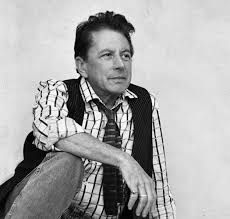On This Day (10 November): Give 'Em Enough Rope
- jamesgeraghty
- Nov 10, 2022
- 3 min read
On this day, 10 November 1978, the Clash released their second album, Give 'Em Enough Rope, on CBS Records.

Although generally fairly well received, it ended up sitting somewhat uneasily between the raw power of debut record The Clash and their third and probably most highly regarded album, London Calling.
Over Producer:
Produced by Sandy Perlman, who was most noted for his work with 70s rockers, Blue Oyster Cult, it was a much more slickly laid out record - largely in an attempt to break into the American market (it was actually released there before The Clash album was). It was also the album that saw drummer, Topper Headon make his recorded debut, having replaced Terry Chimes soon after The Clash had been recorded.
It is said that Perlman did not like the sound of Joe Strummer's voice and so deliberately mixed the drums louder to drown it out. The more produced sound of this second album was perhaps reflected in the bands feelings, with Paul Simenon later saying, "Recording that album was just the most boring situation ever. It was just so nit-picking, such a contrast to the first album... it ruined any spontaneity."

Themes of global war, terror and drugs ran through the tracks. Second single English Civil War warned against the re-emergence of the British far right. Julie's Been Working For The Drug Squad was a reference to 'Operation Julie', in which the world's largest LSD production operation was busted in Wales.
Guns and Pigeons:
Guns On The Roof was certainly about global terror and war, but also referenced an infamous incident much closer to home. This involved Paul Simenon and Topper Headon getting arrested by the Metropolitan Police and being charged with criminal damage, after they were caught shooting at racing pigeons with an air gun from the roof of their rehearsal room in Camden.
Tommy Gun: https://youtu.be/bFHEuKkTa5k
Critical reaction:
The album met with a bit of a muted reception in the UK, but some of the big names in the US were much happier with the record.
Legendary critic Lester Bangs said that the record provided "more evidence that the Clash are the greatest rock and roll band left standing."
Noted Rolling Stone journalist, Greil Marcus, was receptive, if a little more restrained, saying it was "straight English punk with a grip on the future." He went on to note that, "The band's vision of a world strangling on its own contradictions hasn't changed, but their idea of their place in that world has."
The Cover:
I have found a few stories around the cover art that overlap and contradict a bit.

The main credit seems to belong to Gene Greif, although the image centres on a 1953 postcard called End of the Trail by Adrian Atwater. The script used for The Clash was originally in bold type, but this was later replaced by a more Japanese style font.
SweetNoisyThings website seems to cast doubt on Greif as the main artist and instead points to Berkeley artist, Hugh Brown. Joe and Mick visited his Chinese Tourist Art exhibition while recording in California.
Ultimate Classic Rock provides perhaps the most plausible fusion of these ideas: "The album cover art, designed by Gene Greif, incorporates a painting called End Of The Trail For Capitalism by Berkeley artist Hugh Brown, which Strummer and Jones saw displayed at a punk rock hangout they visited during breaks while working at San Francisco's Automatt studio. Greif paired it with a 50s postcard titled End of the Trail. Photographed by Adrian Atwater, it featured cowboy Wallace Irving Robertson's lifeless body being picked apart by vultures."



Comments